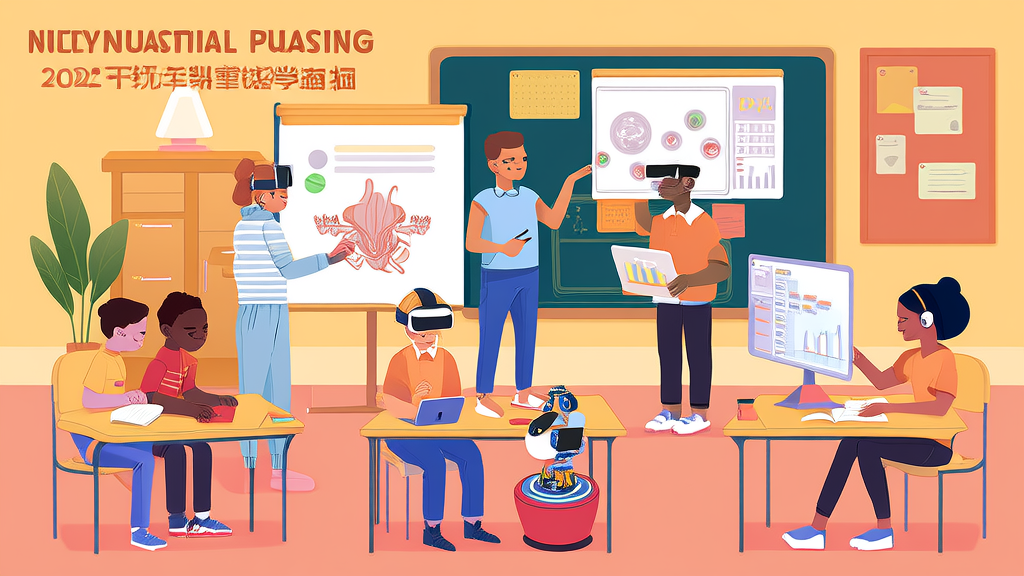Transform K12 Education: 5 Innovative Methods Boosting Student Success in 2025

Empowering the Next Generation: Navigating K12 Education in 2025
Welcome to the future of education! As we stand on the cusp of new possibilities, it's essential for both parents and educators to stay informed about the latest developments in K12 education. From innovative teaching methodologies to cutting-edge educational technology, this post will explore how we can best support our children's learning journeys. Let's dive into what makes a difference in today's classrooms and beyond.
The Power of Modern Teaching Methodologies
In recent years, there has been a significant shift towards more student-centered and interactive teaching methods. One such approach is project-based learning (PBL), which encourages students to apply their knowledge through real-world projects. For instance, a science class might design and build a model solar system, integrating concepts from physics, mathematics, and art. Research shows that PBL not only enhances critical thinking and problem-solving skills but also boosts student engagement and motivation.
Another effective method is blended learning, which combines traditional face-to-face classroom instruction with online digital media. This approach allows for personalized learning experiences, as students can work at their own pace and access additional resources. A study by the Clayton Christensen Institute found that blended learning can lead to improved academic performance and higher graduation rates.
Insights into Child Development and Learning
Understanding child development is crucial for tailoring educational approaches. Recent research highlights the importance of executive function skills, such as working memory, inhibitory control, and cognitive flexibility. These skills are foundational for academic success and can be nurtured through activities like puzzles, games, and structured play. For example, a teacher might use a game of "Simon Says" to help young students practice following directions and self-control.
Additionally, the role of social and emotional learning (SEL) cannot be overstated. SEL programs, which focus on developing self-awareness, self-management, social awareness, relationship skills, and responsible decision-making, have been shown to improve academic outcomes and reduce behavioral issues. A case study from the Collaborative for Academic, Social, and Emotional Learning (CASEL) demonstrated that schools implementing SEL saw a 9% increase in academic performance and a 24% improvement in social and emotional skills.
Educational Technology Trends Shaping the Future
Technology continues to transform the educational landscape, offering new tools and platforms to enhance learning. Artificial intelligence (AI) is one of the most promising areas, with AI-powered adaptive learning systems that can provide personalized instruction and feedback. For example, DreamBox Learning uses AI to adjust the difficulty of math problems based on a student's performance, ensuring that each child is challenged at the right level.
Virtual and augmented reality (VR/AR) are also gaining traction, providing immersive learning experiences. Imagine a history lesson where students can virtually visit ancient Rome or a biology class where they can explore the human body in 3D. These technologies not only make learning more engaging but also deepen understanding and retention. A pilot program in a California school district found that students who used VR for science lessons showed a 30% improvement in test scores compared to those who did not.
Practical Tips for Parents and Teachers
For parents, staying involved in your child's education is key. Here are some actionable tips:
- Communicate regularly with teachers: Attend parent-teacher conferences, and don't hesitate to reach out if you have concerns or questions.
- Create a supportive home environment: Set up a dedicated study space, establish a consistent routine, and encourage a love of learning.
- Engage in educational activities together: Read books, visit museums, and participate in hands-on projects to reinforce what your child is learning in school.
For teachers, here are some strategies to enhance your teaching:
- Integrate technology thoughtfully: Use tools that complement your teaching goals and enhance student engagement. Ensure that all students have equitable access to these resources.
- Foster a growth mindset: Encourage students to see challenges as opportunities for growth. Provide constructive feedback and celebrate effort and progress.
- Collaborate with colleagues: Share best practices, seek feedback, and work together to create a cohesive and supportive learning environment.
Conclusion: Empowering Our Children for Success
As we navigate the ever-evolving landscape of K12 education, it's clear that a combination of innovative teaching methods, a deep understanding of child development, and the strategic use of technology can make a profound difference. By staying informed and proactive, parents and educators can work together to create enriching and effective learning experiences for our children. Let's embrace these opportunities and empower the next generation to thrive.
Join the conversation and share your thoughts and experiences in the comments below. Together, we can shape a brighter future for our children.